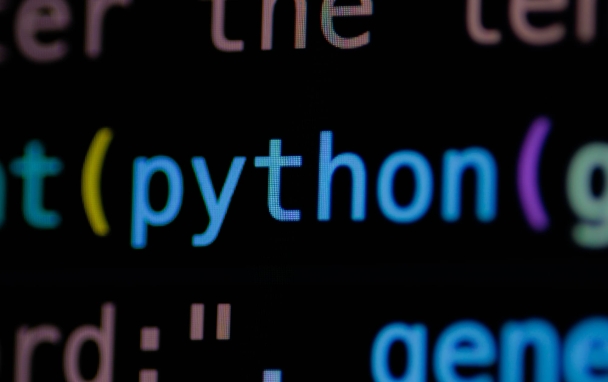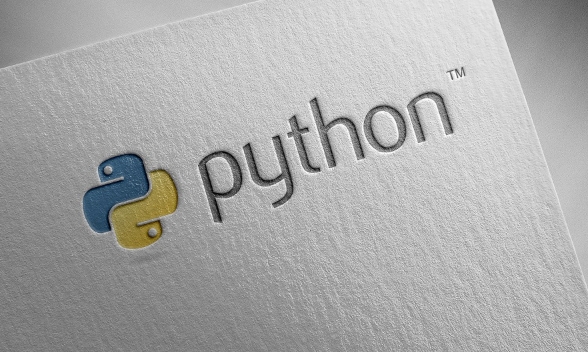Common methods for obtaining a subset of lists in Python include: 1. Use slice operations to extract sublists by specifying start, end and step parameters; 2. Use list comprehension to generate sublists based on conditions to filter elements; 3. Use itertools.islice to process iterator-type slices. Slicing operations are the most basic and commonly used. For example, numbers[2:5] can obtain elements with indexes 2 to 4; list comprehensions such as [x for x in numbers if x % 2 == 0] can filter even numbers; for iterators, islice function can be used to combine list() conversion to achieve efficient slicing. These three methods are applicable to different scenarios, among which the slice operation is the most concise and efficient.

The most common way to get a subset of a list (that is, a sublist) in Python is to use slicing operations. This method is simple and efficient and can meet the needs of most scenarios.

Extract sublists using slice operations
This is the most common practice. You can get the sublist by specifying the start index, end index, and step size. The basic syntax is as follows:

my_list[start:end:step]
-
startis the starting index (included) -
endis the end index (not included) -
stepis step size (optional)
For example:
numbers = [0, 1, 2, 3, 4, 5, 6, 7, 8, 9] # Get elements with indexes from 2 to 5 (excluding index 5) subset = numbers[2:5] # The result is [2, 3, 4]
You can also omit certain parameters, such as:

-
numbers[:5]means before index 5 is taken from the beginning -
numbers[5:]means to get the last one from index 5 -
numbers[-3:]means to take the last three elements
Generate sublists based on conditions
Sometimes you don't want to take elements by position, but rather filter out sublists that meet the criteria based on the characteristics of the value. At this time, you can use list derivation formulas.
For example, you want to take all even numbers from a list:
numbers = [0, 1, 2, 3, 4, 5, 6, 7, 8, 9] Evens = [x for x in numbers if x % 2 == 0]
This method is very flexible and can be judged in combination with various logical ways, such as:
- Take numbers greater than 5:
[x for x in numbers if x > 5] - Take items with a string length greater than 3:
[s for s in str_list if len(s) > 3]
If you are not familiar with list comprehension, you can also use the filter() function to combine lambda to achieve similar functions.
Handle slices of iterator type using itertools.islice
If you are dealing with an iterator (such as a generator) instead of a normal list, you cannot use slice operations directly. At this time, you can use itertools.islice .
For example:
from itertools import islice gen = (x for x in range(10)) subset = list(islice(gen, 2, 6)) # Take out the 2nd to 6th elements, and the result is [2, 3, 4, 5]
The advantage of this method is that it can avoid converting the entire iterator into a list and then slicing it, saving memory, and is suitable for handling large data streams or large file readings.
However, it should be noted that islice returns an iterator, and you need to convert it with list() to see the specific data.
Basically these are the methods. Different scenarios can be selected in different ways, among which slicing is the most basic and commonly used.
The above is the detailed content of How to get a sublist from a python list?. For more information, please follow other related articles on the PHP Chinese website!

Hot AI Tools

Undress AI Tool
Undress images for free

Undresser.AI Undress
AI-powered app for creating realistic nude photos

AI Clothes Remover
Online AI tool for removing clothes from photos.

Clothoff.io
AI clothes remover

Video Face Swap
Swap faces in any video effortlessly with our completely free AI face swap tool!

Hot Article

Hot Tools

Notepad++7.3.1
Easy-to-use and free code editor

SublimeText3 Chinese version
Chinese version, very easy to use

Zend Studio 13.0.1
Powerful PHP integrated development environment

Dreamweaver CS6
Visual web development tools

SublimeText3 Mac version
God-level code editing software (SublimeText3)
 How to handle API authentication in Python
Jul 13, 2025 am 02:22 AM
How to handle API authentication in Python
Jul 13, 2025 am 02:22 AM
The key to dealing with API authentication is to understand and use the authentication method correctly. 1. APIKey is the simplest authentication method, usually placed in the request header or URL parameters; 2. BasicAuth uses username and password for Base64 encoding transmission, which is suitable for internal systems; 3. OAuth2 needs to obtain the token first through client_id and client_secret, and then bring the BearerToken in the request header; 4. In order to deal with the token expiration, the token management class can be encapsulated and automatically refreshed the token; in short, selecting the appropriate method according to the document and safely storing the key information is the key.
 Explain Python assertions.
Jul 07, 2025 am 12:14 AM
Explain Python assertions.
Jul 07, 2025 am 12:14 AM
Assert is an assertion tool used in Python for debugging, and throws an AssertionError when the condition is not met. Its syntax is assert condition plus optional error information, which is suitable for internal logic verification such as parameter checking, status confirmation, etc., but cannot be used for security or user input checking, and should be used in conjunction with clear prompt information. It is only available for auxiliary debugging in the development stage rather than substituting exception handling.
 How to iterate over two lists at once Python
Jul 09, 2025 am 01:13 AM
How to iterate over two lists at once Python
Jul 09, 2025 am 01:13 AM
A common method to traverse two lists simultaneously in Python is to use the zip() function, which will pair multiple lists in order and be the shortest; if the list length is inconsistent, you can use itertools.zip_longest() to be the longest and fill in the missing values; combined with enumerate(), you can get the index at the same time. 1.zip() is concise and practical, suitable for paired data iteration; 2.zip_longest() can fill in the default value when dealing with inconsistent lengths; 3.enumerate(zip()) can obtain indexes during traversal, meeting the needs of a variety of complex scenarios.
 What are Python type hints?
Jul 07, 2025 am 02:55 AM
What are Python type hints?
Jul 07, 2025 am 02:55 AM
TypehintsinPythonsolvetheproblemofambiguityandpotentialbugsindynamicallytypedcodebyallowingdeveloperstospecifyexpectedtypes.Theyenhancereadability,enableearlybugdetection,andimprovetoolingsupport.Typehintsareaddedusingacolon(:)forvariablesandparamete
 What are python iterators?
Jul 08, 2025 am 02:56 AM
What are python iterators?
Jul 08, 2025 am 02:56 AM
InPython,iteratorsareobjectsthatallowloopingthroughcollectionsbyimplementing__iter__()and__next__().1)Iteratorsworkviatheiteratorprotocol,using__iter__()toreturntheiteratorand__next__()toretrievethenextitemuntilStopIterationisraised.2)Aniterable(like
 Python FastAPI tutorial
Jul 12, 2025 am 02:42 AM
Python FastAPI tutorial
Jul 12, 2025 am 02:42 AM
To create modern and efficient APIs using Python, FastAPI is recommended; it is based on standard Python type prompts and can automatically generate documents, with excellent performance. After installing FastAPI and ASGI server uvicorn, you can write interface code. By defining routes, writing processing functions, and returning data, APIs can be quickly built. FastAPI supports a variety of HTTP methods and provides automatically generated SwaggerUI and ReDoc documentation systems. URL parameters can be captured through path definition, while query parameters can be implemented by setting default values ??for function parameters. The rational use of Pydantic models can help improve development efficiency and accuracy.
 How to test an API with Python
Jul 12, 2025 am 02:47 AM
How to test an API with Python
Jul 12, 2025 am 02:47 AM
To test the API, you need to use Python's Requests library. The steps are to install the library, send requests, verify responses, set timeouts and retry. First, install the library through pipinstallrequests; then use requests.get() or requests.post() and other methods to send GET or POST requests; then check response.status_code and response.json() to ensure that the return result is in compliance with expectations; finally, add timeout parameters to set the timeout time, and combine the retrying library to achieve automatic retry to enhance stability.
 Python variable scope in functions
Jul 12, 2025 am 02:49 AM
Python variable scope in functions
Jul 12, 2025 am 02:49 AM
In Python, variables defined inside a function are local variables and are only valid within the function; externally defined are global variables that can be read anywhere. 1. Local variables are destroyed as the function is executed; 2. The function can access global variables but cannot be modified directly, so the global keyword is required; 3. If you want to modify outer function variables in nested functions, you need to use the nonlocal keyword; 4. Variables with the same name do not affect each other in different scopes; 5. Global must be declared when modifying global variables, otherwise UnboundLocalError error will be raised. Understanding these rules helps avoid bugs and write more reliable functions.






